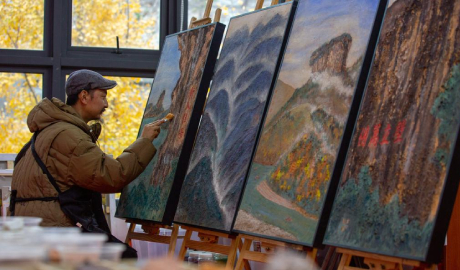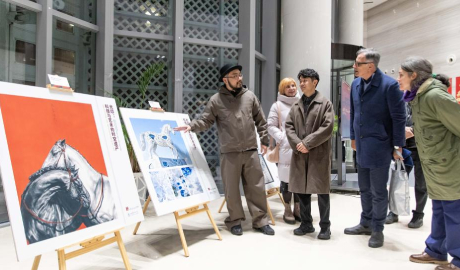

In the 17th century, Isaac Newton showed his research on “alchemy” in his manuscripts. Alchemy, using mercury and other elements to make gold and the “elixir of immortality”, had been popular in the West for centuries. In fact, as early as in the 8th century A.D., another mercury-based alchemy appeared in the Four Medical Classics, the cornerstone of Tibetan medicine in China, which turned mercury into a double-edged sword of poison and remedy.
In history, European doctors have used mercury to treat syphilis, but many patients died from poisoning. In the East, however, Tibetan doctors transformed mercury into a life-saving medicine.
Mercury was made into “zota” to treat human diseases. The detoxification process involves eight types of metals, eight types of minerals, and a refining process that includes valuable medicinal herbs.
The entire process takes about two and a half to three months. Mercury poses a threat to humans mainly through its “rust” and “heavy metal” components. After hundreds of intricate processing steps, these harmful elements are removed, rendering it a life-extending ingredient frequently employed in medications like Renqing Changjue, Zuozhu Daxi, and other precious remedies. Renqing Changjue not only prevents the spread of cancer cells, but also exhibits effectiveness for patients with tuberculosis and bone tuberculosis.
Mercury refining is a technique difficult to master, grasped only by Tibetan doctors up until present. When this technique was listed as an intangible cultural heritage in 2006, five inheritors were identified at national level. It’s imperative to successfully pass on this skill to future generations so it can be practiced to this day.
Nowadays, modern science has proven that alchemy is nothing but pseudo-science, shattering the fantasies of all alchemists. However, in China, Tibetan doctors have passed down the pharmaceutical technology with mercury to this day and have applied these skills to other mineral-based medicine formulations.
Due to the widespread use of minerals in Tibetan medicine and the fact that different processing methods are used for different mineral-based medicines, over time, a complete pharmaceutical processing system has been developed, which can be simply compared to the cooking process. For example, to prepare dumplings, you need to make the dough, raw meat and water, then wrap and boil them before serving them on the dining table. Similarly, Tibetan medicines cannot be used until after they are properly processed. When Tibetan doctors process honey, they first remove the toxicity by boiling it in barley wine, thereby eliminating impurities. Another example is Gymnadenia orchidis, which must be boiled in goat’s milk, ground, dried, and eventually powdered before being incorporated into medicinal formulations.
The processing and preparation of Tibetan medicine are scrupulous, and this tradition has been preserved for a long time. This being said, there’s room for improvement from a quality control perspective. For instance, in the past we relied on visual inspections by human eyes, but today we can use some chemical and optical methods in medicine production. This enables us to objectively demonstrate to the public the true essence of Tibetan medicine and use real science to explain its properties.

Lianyungang port welcomes largest group of S. Korean travelers under China's visa-free policy

Hall of Mental Cultivation of the Palace Museum reopens to public

Wuyi rock pigment painting in China's Fujian infuses modern artistic elements into tradition

China-Serbia digital art exhibition explores time, space, heritage

点击右上角![]() 微信好友
微信好友
 朋友圈
朋友圈

请使用浏览器分享功能进行分享
